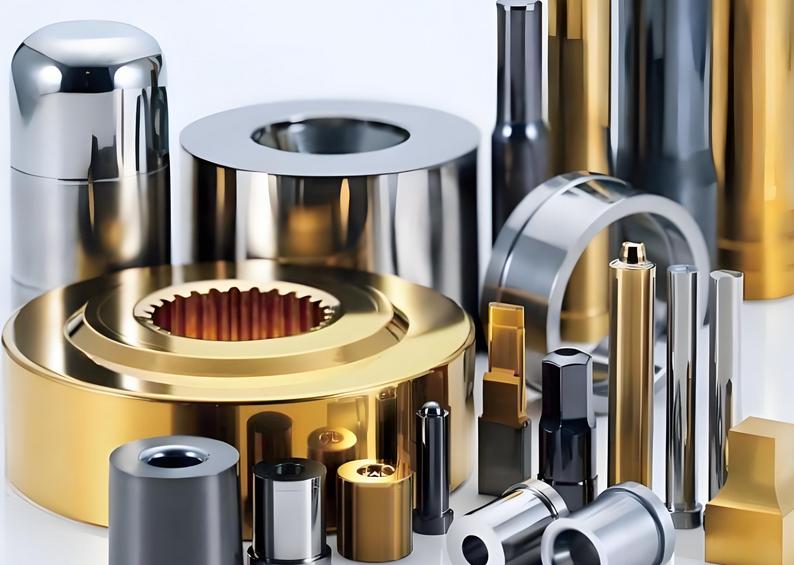In the realm of surface treatment technologies, PVD (Physical Vapor Deposition) coatings and electroplating are both commonly employed methods for applying a protective layer to the surface of metal materials, enhancing their corrosion resistance, wear resistance, and aesthetic appeal. However, despite sharing some similarities, there are notable distinctions between these two techniques. This article will delve into the differences between PVD coatings and electroplating.

I. PVD Coatings
PVD, or Physical Vapor Deposition, is a surface treatment technique that involves the formation of a uniform and dense film on the surface of a substrate by evaporating or sputtering source materials in a vacuum environment. PVD coatings are renowned for their excellent properties such as high hardness, corrosion resistance, wear resistance, and high-temperature resistance, and they find extensive application in industries including aerospace, automotive, medical, and electronics.
1. Advantages: PVD coatings have exceptional corrosion resistance, wear resistance, and high-temperature resistance, and they possess high coating quality with a longer service life.
2. Disadvantages: The preparation process of PVD coatings requires a vacuum environment, leading to higher equipment costs; moreover, the coatings are generally thinner and may require multiple depositions to achieve the desired thickness.
II. Electroplating
Electroplating is a chemical treatment method that utilizes an electric current to deposit a layer of metal or alloy onto the surface of a metal. During the electroplating process, metal ions are attracted to the surface of the substrate under the influence of the electric current, resulting in the formation of a uniform and dense metallic coating. Electroplating has a long history and is commonly used for decorative, corrosion-protective, and functional coatings.
1. Advantages: Electroplating technology is mature, with relatively lower equipment costs; the coating thickness can vary widely to meet different application needs.
2. Disadvantages: Harmful waste products may be produced during the electroplating process, potentially polluting the environment; moreover, the wear resistance and high-temperature resistance of electroplated coatings are relatively poor.
III. Differences Between PVD Coatings and Electroplating
1. Preparation Principle: PVD coatings are formed through physical vapor deposition methods, while electroplating involves the deposition of metal or alloy onto the metal surface via an electric current.
2. Application Fields: PVD coatings are widely used in industries such as aerospace, automotive, medical, and electronics, particularly suitable for extreme environments with high temperatures, high pressures, and high wear; electroplating technology is applicable for decorative, corrosion-protective, and functional coatings.
3. Coating Performance: PVD coatings exhibit excellent properties such as high hardness, corrosion resistance, wear resistance, and high-temperature resistance; electroplated coatings have relatively poorer corrosion resistance and wear resistance but offer a good appearance.
4. Environmental Impact: The preparation of PVD coatings requires a vacuum environment, leading to higher equipment costs; during electroplating, harmful waste products may be produced, potentially polluting the environment.
5. Coating Thickness: PVD coatings are generally thinner and may need multiple depositions to reach the desired thickness; electroplated coatings can have a wide range of thicknesses to meet various application requirements.
Conclusion:
PVD coatings and electroplating differ significantly in terms of preparation principles, application fields, coating performance, environmental impact, and coating thickness. When choosing appropriate surface treatment technologies, it is necessary to consider the actual needs and characteristics. Understanding these differences helps us to better select and use coating products, improving the lifespan and performance of materials.





 Customer service 1
Customer service 1  Customer service 2
Customer service 2